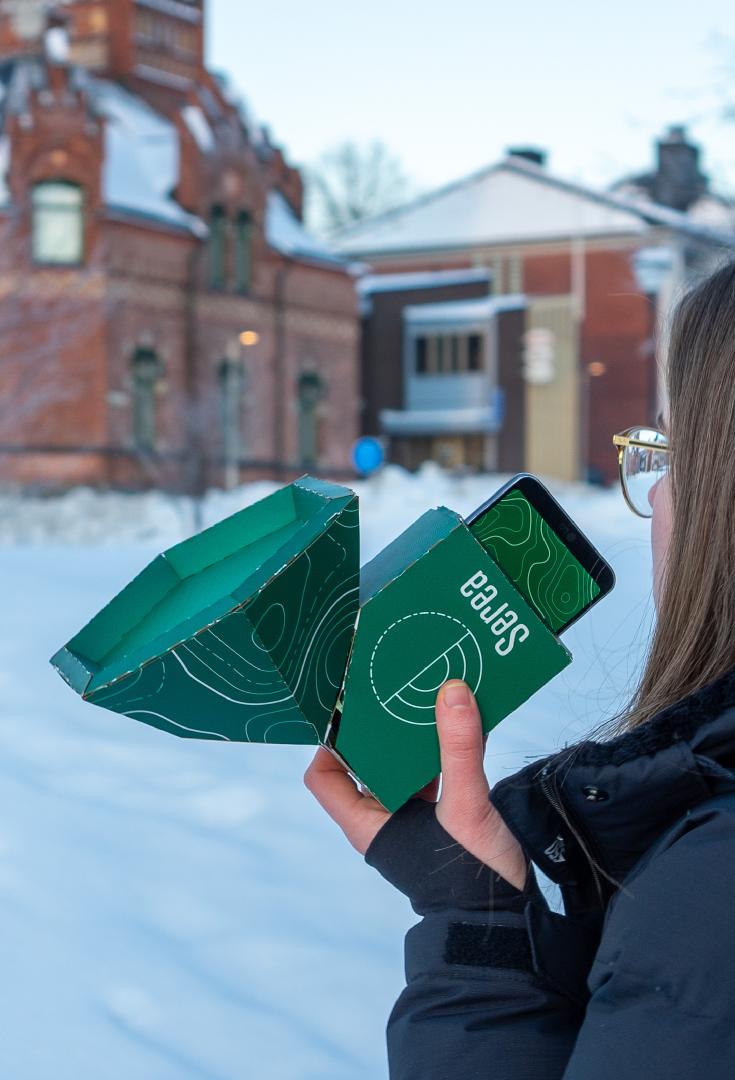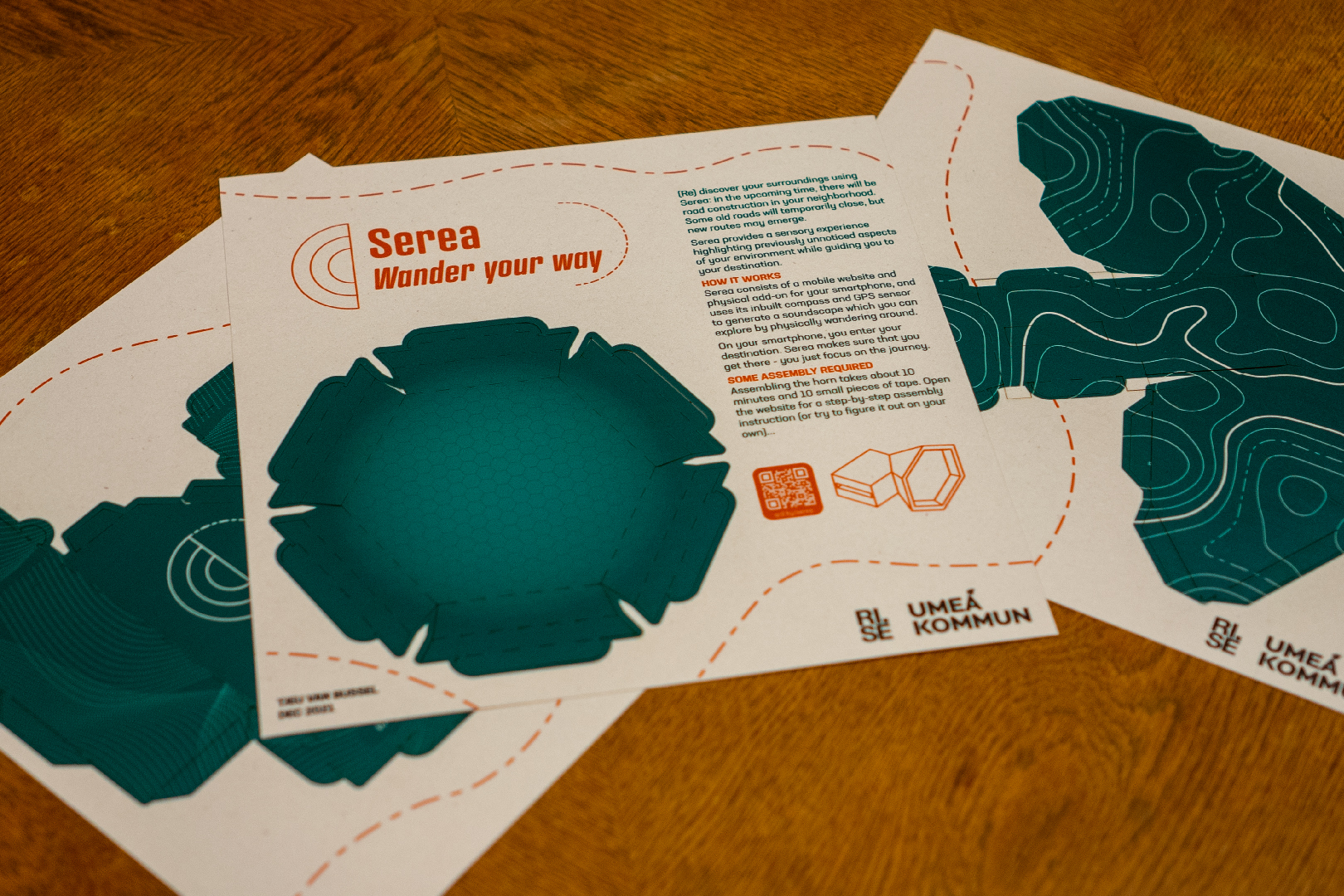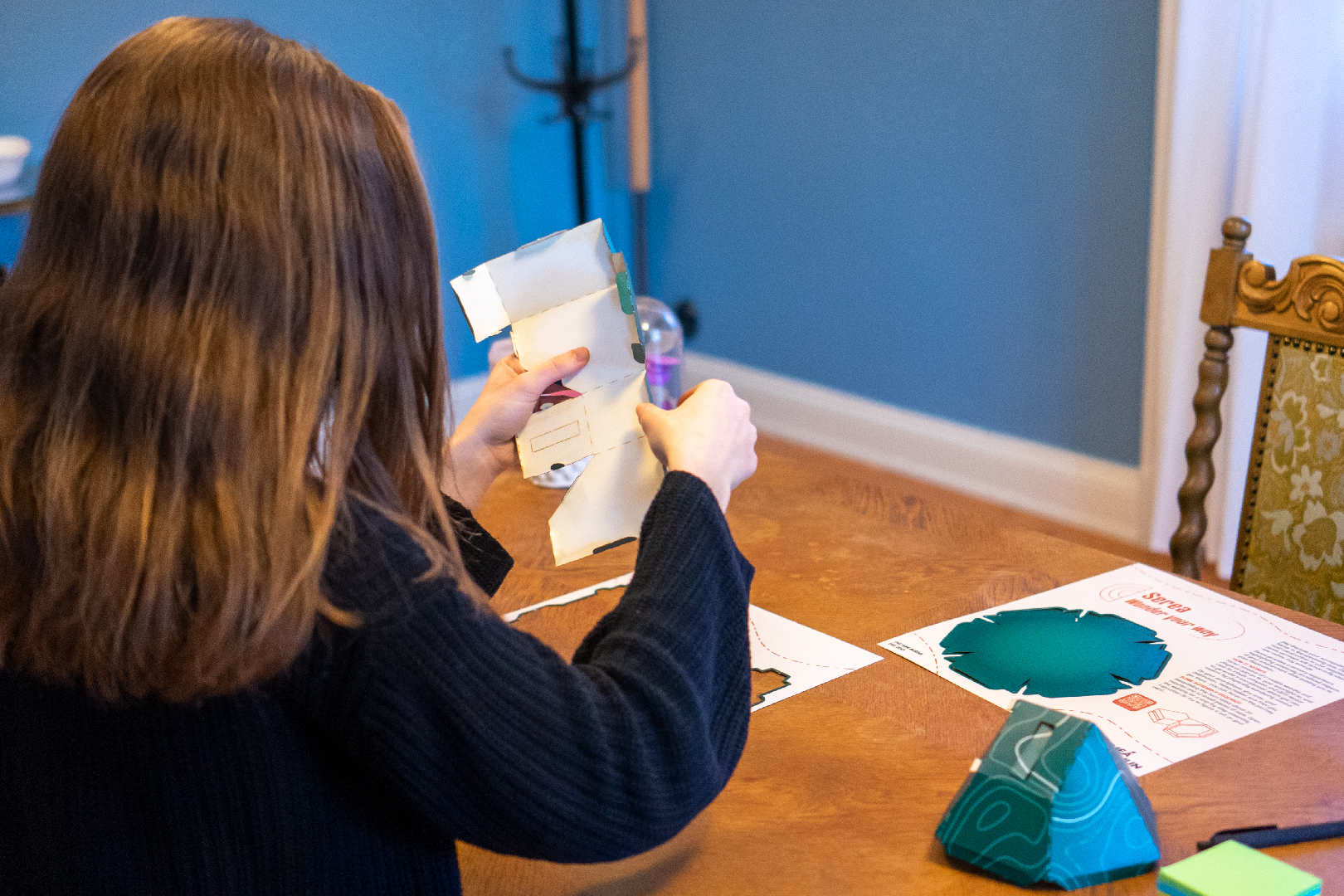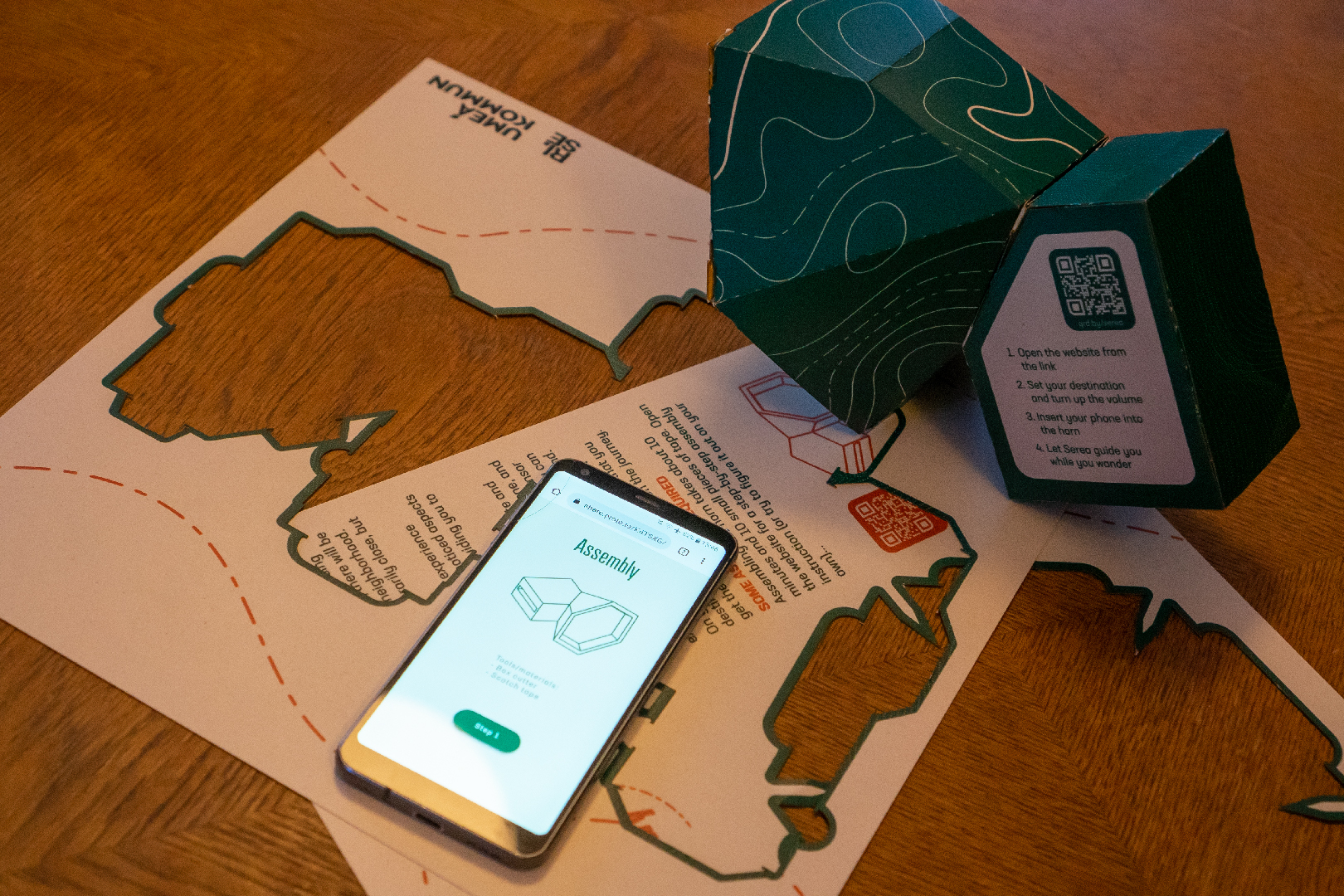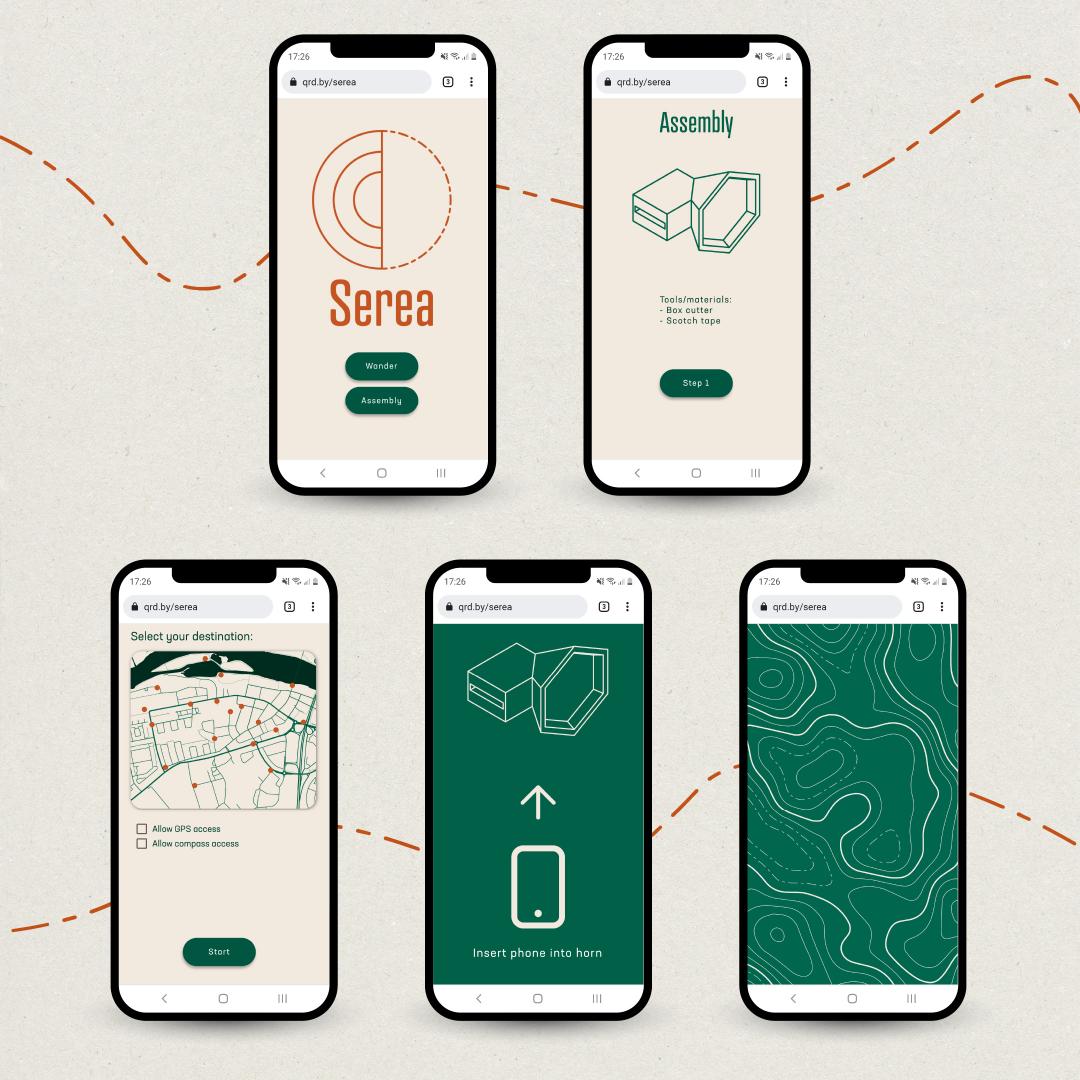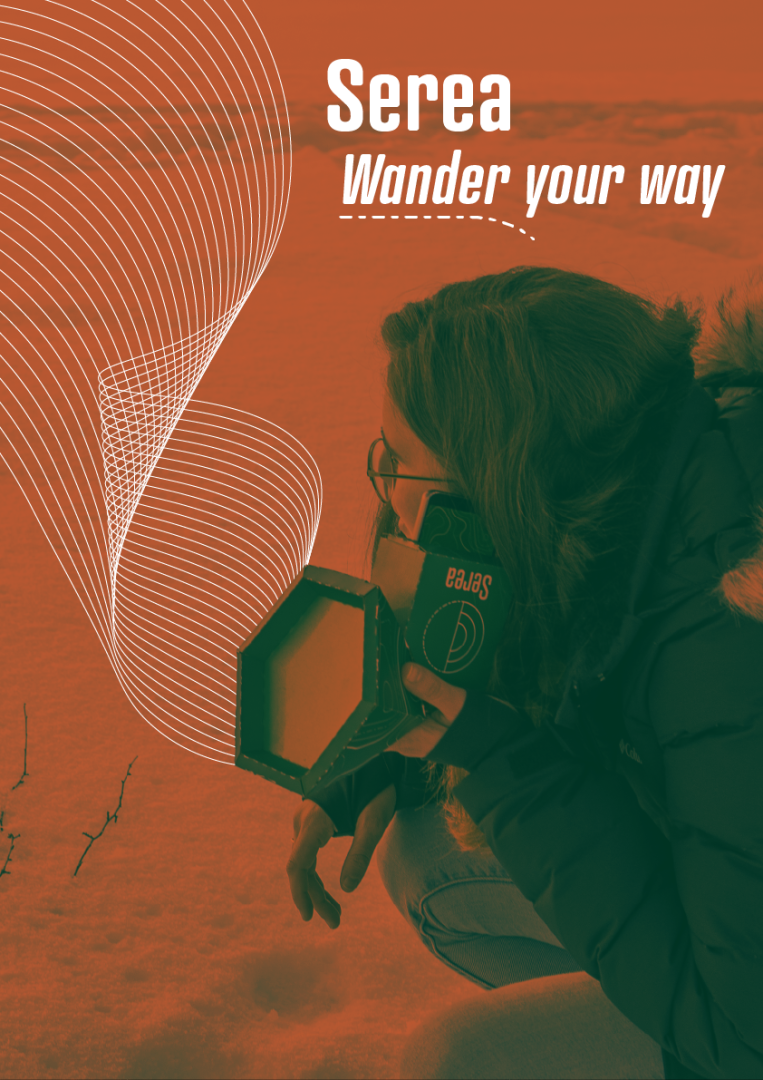Serea
Basic information
Project Title
Full project title
Category
Project Description
Serea is a navigation device that allows its users to be present in-the-moment, and re-experience the green in their urban surroundings during their commute in a new way using a dynamic soundscape. Serea consists of a cardboard-made horn holding a smartphone, which generates a soundscape that seduces the user to follow the direction in which it increases in intensity. These directions do not lead directly towards the destination, but rather aim to let you wander on your way.
Geographical Scope
Project Region
Urban or rural issues
Physical or other transformations
EU Programme or fund
Which funds
Description of the project
Summary
Serea is an interactive greenspace intervention which increases the nature-connectedness of urban residents to enhance physical and mental health. Rather than focusing on classic methods of increasing nature experience in the city (think of planting extra green), Serea takes a more subtle approach of refocusing attention towards existing green features in one’s environment.
Serea is an intentionally ambiguous navigation device that uses a dynamic soundscape to guide the user to his destination while their senses are directed towards the present. Consisting of a DIY cardboard horn with accompanying web-app, Serea uses the GPS and compass sensors of modern smartphones to generate a soundscape that changes based on the user’s location and direction. By varying the intensity of the soundscape while the user moves the horn around, Serea nudges the user to follow the direction in which the soundscape increases in intensity. This kit can be distributed by the municipality of Umeå to local families, leading up to a major road construction, to reframe the construction period from a nuisance into an opportunity for new experiences of one’s surroundings.
This concept positions itself as a digital placemaking technology that affords users to gain a new way of looking at their familiar environment by triggering different senses, while finding their way to their usual destination. It utilizes the power of modern day smartphones to navigate, but intentionally hides the smartphone in the cardboard horn in order to direct attention towards the environment.
This project is developed for the municipality of Umeå within the context of the EU-funded GoGreenRoutes (GGR) project, which supports projects for increasing nature-connectedness in cities through implementing nature-based solutions. The Bölevägen street in Umeå is set to become the cities’ green route. The concept is inspired by a collaboration with students of the middle school located at Bölevägen.
Key objectives for sustainability
It is widely accepted that urban green spaces such as parks and greenways provide both physical and mental health benefits for city dwellers in our increasingly congested and polluted cities. Classical approaches to facilitating a connection to green space for urban residents tend towards physical change (introducing more green features in urban infrastructures) or promotion/marketing programmes for existing urban green spaces.
While valid methods, increasing the amount of urban green space can be a costly and lengthy process, and promotion/marketing programmes are just one approach for promoting residents to seek out a connection to nature. Alternative to the classically linear urban planning practices of local governments for increasing connection to green space, this project reframes the challenge of facilitating connection to greenspace for urban residents from a transformation of green in the public space itself into a transformation of the experience of existing green features in the urban environment. This reframing allows us to approach the challenge from an interaction design perspective rather than drawing from urban planning practices.
This project provides a response to a question of the local municipality on how a greenway might be created through “Nature-Based solutions”, beyond simply increasing the amount of green by proposing a technology-based intervention that facilitates new experiences of existing green features. The project demonstrates how the act of making, or designing, something new may cut across different disciplines related to transformation, design and urban planning – integrating them in illustrating a novel approach to the experience of green in public space.
Key objectives for aesthetics and quality
Affording mindful experiences
Serea allows for re-experiencing existing surroundings, magnifying details that otherwise go unnoticed. This can be framed as supporting mindful experiences while outside. By providing an experience that guides one’s attention to the physical environment through softly augmenting one’s auditive perception of the environment, Serea has a quality of seducing people using it to focus their attention in the present. Usual commutes can be a prime example of a “mindless” activity, which Serea counters by not allowing rushing or navigating on autopilot, but providing an experience that embraces the moment and emphasizes the surroundings through which one is moving.
Duality
Serea was designed within a specific context: the reconstruction of an often-used road which will have significant implications for those living, working or going to school near that road. There is thus also a more purely functional element to Serea, in that it helps school children navigate, but simultaneously affording them to get (a little bit) lost on their way. This is a fundamental dichotomy within the design. Instead of trying to be reductive in this dichotomy, Serea navigates it and crafts an intervention that balances “wandering” and “getting to your destination”.
Layers of meaning
Serea works from a notion of embodiment, where meaning arises in interaction with the environment that is fundamentally subjective. This is exemplified in the soundscape that mediates the experience of nature in public space for those using Serea. It opens up for individuals to direct their attention away from destination thinking and focus on the particular place in which they are located, by using one’s personal mobile device to become an ‘artificial sensor’, which could reveal an ambiguous and indirect path to a destination while promoting a meaningful experience of the present.
Key objectives for inclusion
The project serves as an exemplar for Nature-Based solutions: a location-specific digital technology facilitating a deeper relationship between citizen and public space inspired and supported by nature. The strong focus on sensory experiences enabled by the specific design shows how NBS do not necessarily have to be large scale greenspace interventions, but can also be implemented on a smaller scale using indicators from digital placemaking.
This project exemplifies how design can imagine aspirations and make them experienceable through prototyping. The presented designs’ aim to facilitate guidance by getting lost, shows that not all dualities have to be solved but rather can be embraced to keep discussions open and involve a plurality of people on different levels. This is different from the usual practice of urban development that is formed by a linear process.
Within this project we transform a city’s wish for more urban green space into one focused on the individual’s perception of existing green in our urban environments, using digital technologies to afford slow and mindful experiences of urban routes magnifying details otherwise unnoticed. In working towards this goal it contributes an intervention that is applicable beyond the context and can increase nature experience in many other cities, as well as providing the municipality with an example of a design driven nature-based solution stemming from a grassroots approach that allows for low-cost quick interventions for implementing green experience in urban construction projects. This resonated strongly with the civil servants of the local municipality, and found connections to other projects they were involved in as well.
This project aims to demonstrate how design and the use of digital technologies can be a key in enabling ambitions from other disciplines. In doing so, design can further contribute to the transformation of our living environments to become beautiful, inclusive and sustainable.
Physical or other transformations
Innovative character
The dimension of environmental sustainability is re-interpreted in Serea as the personal experience of greenspace, and thus focuses on enhancing the sensory experience of the individual in relation to their environment, rather than creating big expensive greenspace interventions. This is not to say that these should not be done, but Serea suggests that during periods of construction leading up to increased urban green space, solutions like these can present affordable and interesting ways to reconnect citizens with greenspace.
This experience of environmental sustainability is then achieved through design for individual interaction, providing ambiguous navigation experiences that re-focus attention on existing pieces of green or nature in our everyday environments.
This concept was developed based on insights from a co-reflection session with local stakeholders, as well as an in-depth co-design workshop with middle school students who took on the challenge of redesigning their way to school when the main access road became inaccessible.

